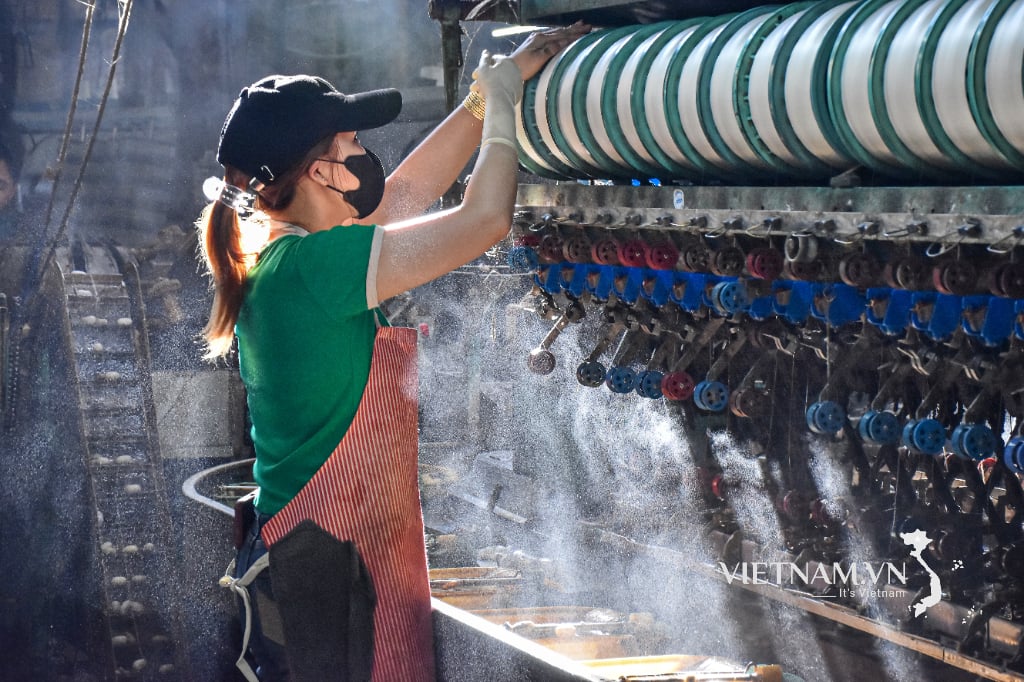Solar tiles work in a similar way to the solar panels that are widely used today. The main difference between the two devices will be in the assembly. Solar tiles will be an improvement over traditional solar panels. Instead of being installed on the roof like traditional solar panels, solar tiles will be part of the roof construction from the beginning. Solar tiles will replace conventional roofing materials.
The tiles are made up of photovoltaic cells, which generate an electric field that can provide electricity for home use when absorbing sunlight. Each tile is connected by an electrical cable to a solar inverter or hybrid inverter. For solar tiles to work effectively, it is necessary to install a solar inverter that converts the energy collected from each tile into electricity.
The power output from sunlight depends directly on the sunlight radiation received by the tiles, which is related to the climate and location of the project such as geographical location, sunlight direction, temperature, etc. You need to pay special attention to the sunlight direction and cleaning the roof tiles, to ensure maximum power generation efficiency of the solar tiles.
Additionally, it is advisable to choose solar tiles that are arranged side by side rather than overlapping (unlike traditional ceramic tiles). This overlapping arrangement creates shaded areas that do not capture much sunlight.
2. How do solar roof tiles work?
Just like the photovoltaic panels, solar tiles also work thanks to the solar cells integrated into the surface. The special feature of these cells is their high flexibility, capable of bending according to the characteristic design of the tiles.
Solar panels often use Thin Film cells, which are highly transparent, thin, and flexible. Thin Film technology has been introduced for a long time and is widely used in various electronic devices. The thin film battery layer will be covered on the entire surface of the roof tile, bringing outstanding efficiency. Thanks to that, solar tiles both perform the function of a normal tile and add the ability to generate electricity similar to battery arrays.
Structure of a solar tile:
- Layer 1: Transparent glass surface.
- 2nd layer: POE film.
- 3rd layer: Miasole Flex photovoltaic cells.
- 4th layer: POE film.
- 5th layer: Curved tile roof layer.
3. When should solar tiles be installed?
The decision to install solar tiles should be considered before you build a house. Because of the high cost, solar tiles are usually used in large corporate buildings. However, they are now also installed in some homes of many high-income families, to reduce the cost of conventional electricity and increase the aesthetics of the house.
In the future, we can hope that this type of solution will be seen in all homes, helping to reduce living costs and increase the energy autonomy of any family.
4. Advantages and disadvantages of solar tiles
4.1. Advantages
Solar tiles are a great source of renewable energy for areas with high solar potential like ours, where there is good solar radiation. Since they are part of the roof design, they are somewhat more attractive and discreet. The aesthetics of solar tiles are also highly appreciated.
4.2. Disadvantages
They are new to the market and therefore very expensive compared to traditional solar panels. Currently, manufacturers and skilled workers for installing solar tiles are not widespread. Only some of the largest manufacturers on the market, such as Tesla Solar, Hanergy and Eternit, are capable of operating them. Unlike photovoltaic panels, solar tiles cannot be installed at angles other than the original roof design. Therefore, in some cases, if you want to change the position of the solar tiles to optimize the efficiency of the electricity collection, it will be more difficult. However, this can be an advantage if the roof is designed correctly for this purpose.
Source: https://diaoc.nld.com.vn/tim-hieu-chi-tiet-ve-ngoi-nang-luong-mat-troi-196240528094245114.htm



![[Photo] The 9th Party Congress of the National Political Publishing House Truth](https://vphoto.vietnam.vn/thumb/1200x675/vietnam/resource/IMAGE/2025/6/24/ade0561f18954dd1a6a491bdadfa84f1)

































































































Comment (0)